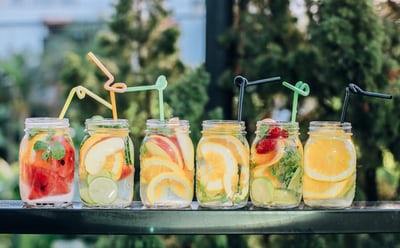
Courtesy of Unsplash
5 Summer Fruits
When you’re having fun in the sun, riding your bike, or at the beach, two common options to cool yourself are water and ice cream (of course not ice cream if you are lactose intolerant). Instead of ice cream, there are healthier options.
Watermelon
As the name suggests, a watermelon is mostly made of water, 92 percent according to sciencemadefun.net and six percent of sugar making it still a sweet healthy snack.
Watermelons are mostly grown in the United States especially in Texas, Florida, Georgia and California. As said by www.agmrc.org, that makes up approximately 69 percent of all grown in the U.S. and is one of the third produced in the United States along with onions and lettuce (specifically head lettuce.) At the King Kullen on Wellwood Avenue a whole, seedless, watermelon costs $3.99.
Although an American popularity, the Integrated Pest Management University of Missouri states they actually originate from Southern Africa.
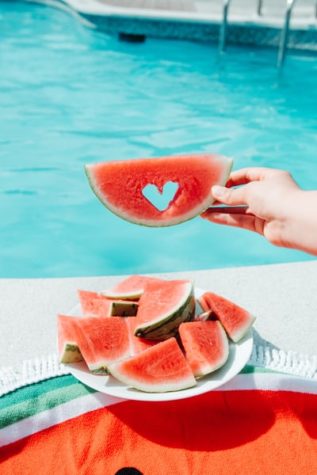
Huckleberry
Not to be confused with blueberries, huckleberries ripen in the middle to late summer. As described by allrecipes.com red huckleberries appear to taste more tart than their blueberry relative while the deeper hued huckleberries taste more like blueberries (ex. blue, dark purple, and black).
Similar to blueberries they are high in Vitamin C. Huckleberries are a good source of Vitamins B and A (according to nwwildfoods.com) and overall “Huckleberries protect the body against immune deficiencies, cardiovascular diseases, prenatal health problems, and eye diseases.”
Huckleberries can be found in forests in the northwestern region of the United States and Canada, from Wyoming, Montana, Idaho, Oregon, Washington, and Alaska. More details is written at everydaywanderer.com.
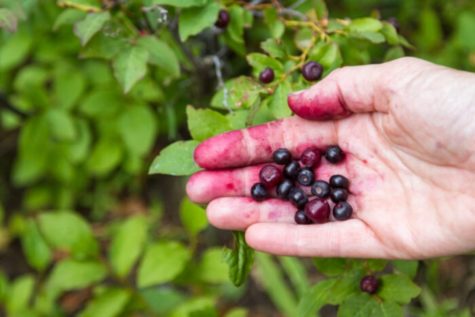
Mango
These Indian originated fruit may be small, but there are big benefits to eating one. Mango.org states one should eat ¾ cup of mango. This portion contains 70 calories while the entire mango is 202 (for the 2–10 inch mango).
Mangos are high in Vitamin C, potassium, Vitamin B-6, and unfortunately sugar (46 grams according to U.S. DEPARTMENT OF AGRICULTURE) and isn’t the best for diabetics. However there are many benefits listed by Healthline which include high amount of antioxidants (compounds that protect your cells from damage), may boost immunity and digestive health, lowers blood pressure levels, maintain a healthy pulse due to the magnesium and potassium levels, may improve eye, skin, and hair health, may decrease the chance of getting leukemia, colon cancer, lung cancer, prostate cancer, and lung cancer, and reduces inflammation.
Although the distant origin mangos are found all across the globe. They can be bought in the King Kullen on Wellwood Avenue, Lindenhurst for $5 and Mango Spears for $6.99.
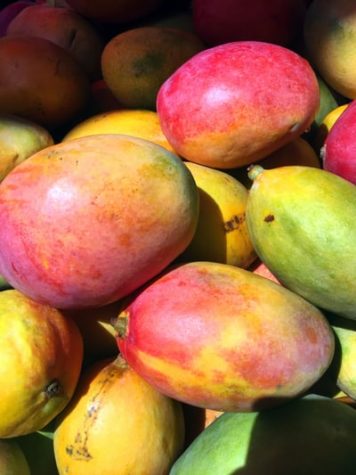
Durian
Durian aka the exotic Southeast Asian superfood with a pungent scent and a prickly outside. Despite the health benefits durian has been banned in the public and traveling in countries like Thailand, Japan, Singapore, and Hong Kong for its smell as told by www.travelandlesiure.com
According to Universiti Teknologi Malaysia: Institute of Bioproduct Development, this southeast Asian fruit has similar to nutrition benefits to Mangos, (see section above) including high levels of potassium and antioxidants, boosts immunity and digestive health, decreases chance of cancer (and also shares the high sugar level). Also the previous source states it helps improve sleep and lessen depression and delays tooth loss and arthritis.
Durian is grown in countries comprising of Thailand, Laos, Vietnam, Malaysia, Brunei, Indonesia and Philippines, but can be rarely bought. One can get it at South Asian Super Market in Deer Park, Durian Nyc in New York City, and Fruit Tree Farm in Copiague.
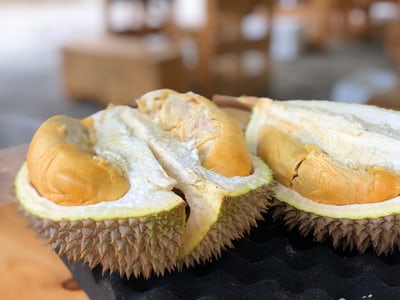
Apricot
The whereabouts of the birth of apricots are somewhat unknown for the fact that some people have guesses on this query. Most if not all are in Asia which contain Armenia, Persia (modern day Iran), China, and countries in Central Asia.
Apricots can be eaten whole, frozen, and dried (all not including the seed). Healthline.com and Grapetree.co state that the nutrition values of the two aftermost shouldn’t have less than the whole (raw) apricot. Actually the dried apricot seems to have more antioxidants, minerals, and fiber than the three. Apricots in general have high amounts of Vitamin C and A, fiber, and potassium which helps the performance of one’s heart and brain as described by Grapetree.co. Apricots also have low calories as said by healthline.com.
Nonetheless of the eastern beginning apricots have gotten into the hands of the United states of America and are grown here, especially California which is the leading state that grow apricots according to agmrc.org.
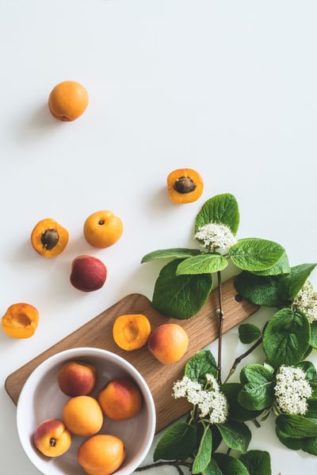
Let’s hope this year’s summer isn’t like the previous summer!
